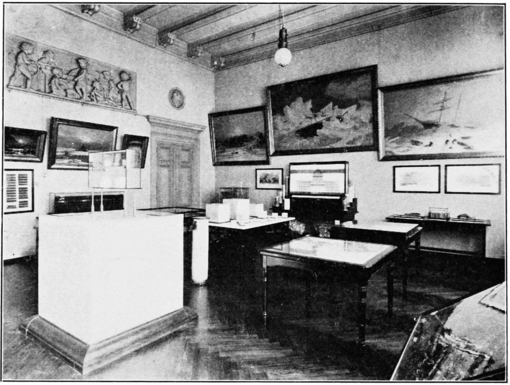hyphenated word was joined on the previous page because of the intervening image.— Ineuw talk 04:27, 21 November 2013 (UTC) (Wikisource contributor note)
and the Gazelle (1874-1876) down to all the varied patterns from the ships of the cable construction companies and recent deep-sea expeditions, are here displayed together with sounding wires, cables, and weights, sounding machines of various types—Thomson, Lucas, Sigsbee, LeBlanc and others—exhibited either by photographs and diagrams, or as actual instruments. There is also a display of typical bottom samples as collected by the merchant marine.
The study of the physical and chemical conditions in the sea is elucidated by a unique collection of instruments. Pressure and reversing thermometers of the Six, Chabaud, Miller-Casella, Negretti-Zambra, Knudsen, Richter and other types are shown, together with instructive exhibits of the effects of pressure at great depths in the sea in crushing thermometers. Scales for recording the color of the sea water and apparatus for determining its transparency are exhibited near the windows of the room. The apparatus used in determining specific gravity and salinity is also found here; self-closing water samplers of the Meyer, Sigsbee and Petterssen-Nansen patterns for bringing up water from any desired depth without contamination from other levels, areometers, pycnometers and apparatus for chlorine (Knudsen) and gas (Fox) analysis.
In an adjacent room are meteorological instruments together with an exhibit of hydrographical instruments such as drift bottles, wave meters, tidal registers and current meters of Aime-Irminger, Massee, Arwidson, Nansen, Ekman, Petterssen bifilar and other patterns for submarine exploration.


